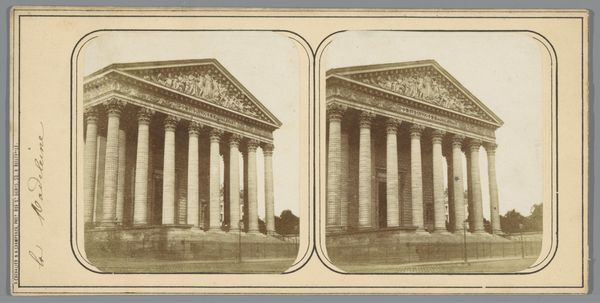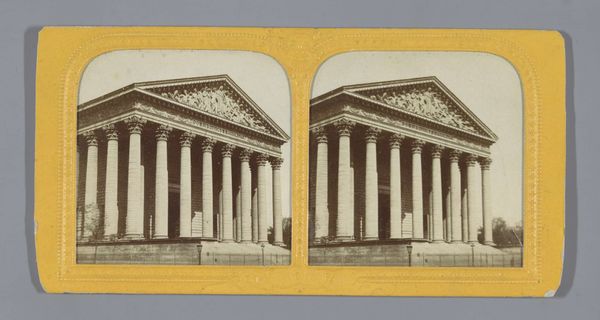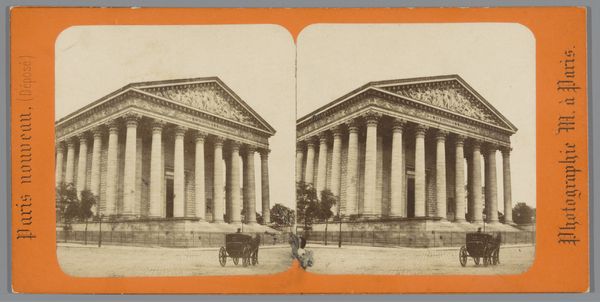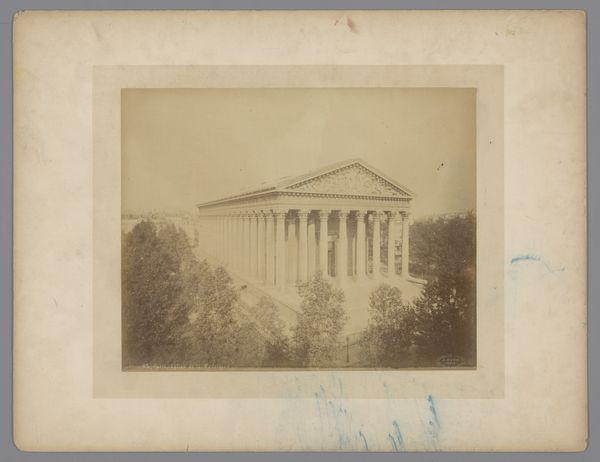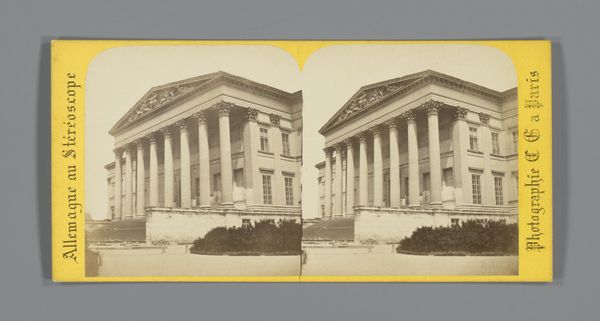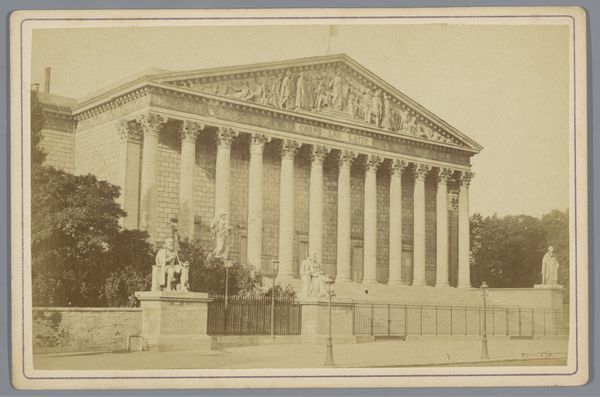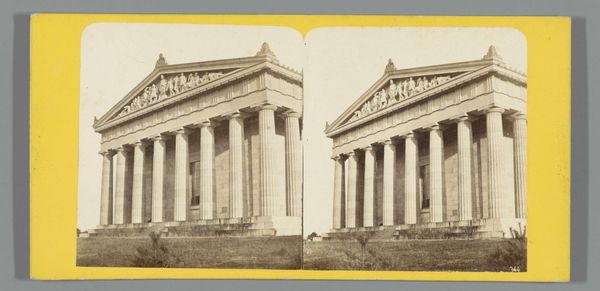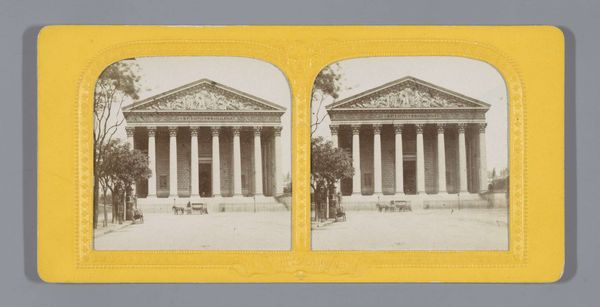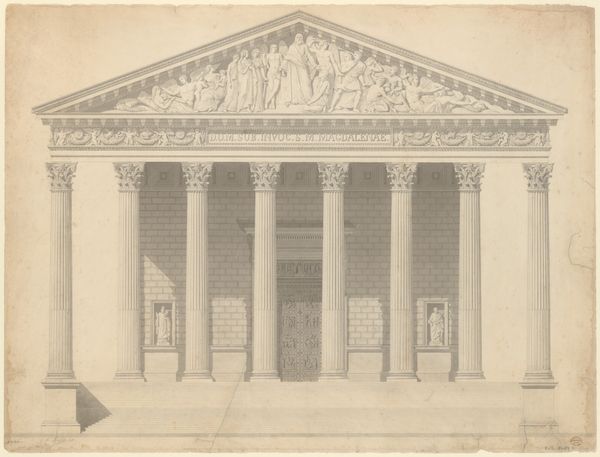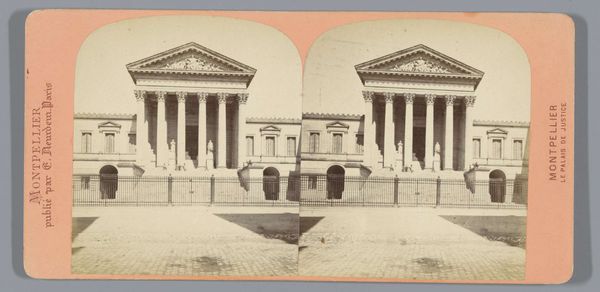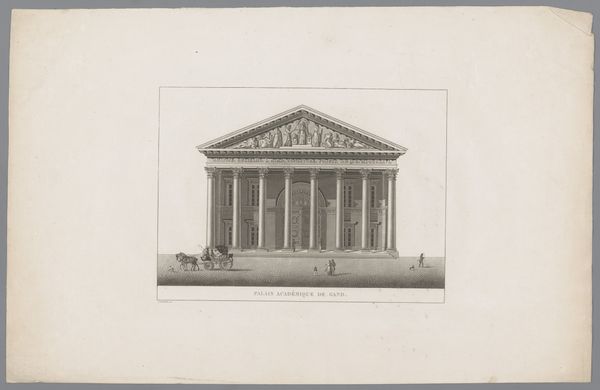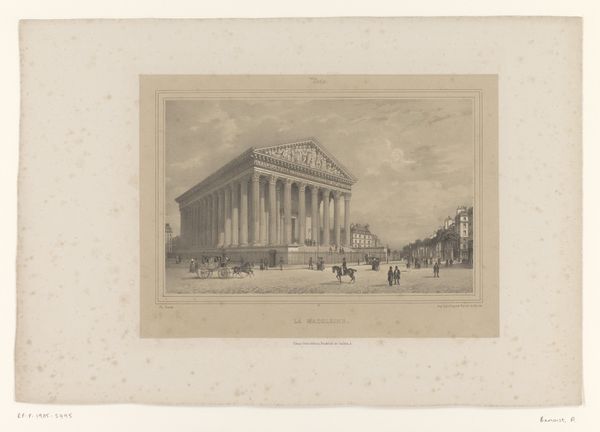
Dimensions: height 87 mm, width 175 mm
Copyright: Rijks Museum: Open Domain
Curator: It’s mesmerizing how architecture, in its grandiose form, can simultaneously feel stoic and inviting, don't you think? Like a solid foundation with whispers of openness, longing to be engaged with. Editor: Absolutely. In this image, circa 1850-1880, we have a stereoscopic photograph titled "Gezicht op La Madeleine in Parijs," or "View of La Madeleine in Paris." What strikes you about this particular rendering? Curator: The duplication for one! It has the feeling of something pressing in on you, though it also has the calm reassurance of symmetry. But more than anything it makes me want to go there. Have you ever just gotten on a plane and headed someplace from a photo? This might push me to that precipice. Editor: The artist, Vibien Golvin, captured more than just the facade. La Madeleine's architectural language speaks volumes. The neoclassical temple-like design, complete with imposing Corinthian columns, reflects a very deliberate reach for historical legitimacy, linking 19th-century Paris to the grandeur of antiquity. Think of it as architecture weaponized as a form of societal messaging! Curator: Ah, "weaponized." A little harsh perhaps? I love your deep dives, though. Editor: Consider its history. Initially conceived as a church, then a pantheon honoring Napoleon's army, before finally becoming a church again. Its identity itself became a political battleground, reflecting the shifting sands of French power dynamics. So while visually pleasing and inspiring from a purely aesthetic point of view, its foundations lie in… strife. Curator: Well, can't we still appreciate the final synthesis, even with all those complex origins? Maybe the constant shifts allowed a kind of unintentional… leveling? Like how history's little accidents shape the world for the better. Editor: Perhaps... but even in this serene cityscape, Golvin unknowingly reveals layers of societal intention and ideology, pressing beneath those cool neoclassical stones. Thanks to artists such as Vibien we’re capable of questioning and critiquing what we think we know! Curator: Nicely said. I came for the picture and instead I received food for thought. Which means the art's done its job, and so have we. Editor: To understanding both the visible and invisible stories within art, and the beauty of such a process!
Comments
No comments
Be the first to comment and join the conversation on the ultimate creative platform.
